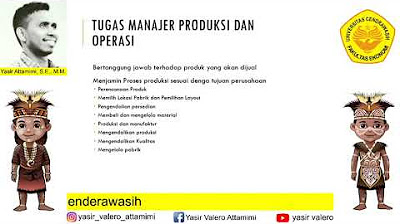How To Storyboard (Easy Tips)
Summary
TLDRIn this video, the creator discusses the value of storyboarding in film production, emphasizing the importance of planning, organization, and clear communication. The creator shares personal tips, including breaking down the story into scenes, finding reference images, and using tools like Millnote and Shotdeck to visualize shots. The creator also provides practical advice on incorporating various shot types, texture shots, and how to handle camera movement in storyboards. Ultimately, the video highlights how storyboarding enhances creativity, client trust, and overall efficiency, while acknowledging that flexibility is essential on set.
Takeaways
- 😀 Storyboarding is a valuable skill that can improve project planning and communication.
- 😀 Breaking down your story into scenes helps to organize your shots and clarify the structure.
- 😀 Using tools like Milanote helps organize your project visually, with reference images for each scene.
- 😀 Shot Deck is a great resource for finding reference images and shot ideas, especially if you're unsure of how to visualize your scenes.
- 😀 If you can't find a suitable reference image, drawing the shot by hand in Milanote can be a last resort, though it's more challenging.
- 😀 When looking for reference images, prioritize framing and action, and create a separate board for lighting and mood inspiration.
- 😀 Captions under reference images are helpful for explaining camera movement and actions in complex shots.
- 😀 Try to maintain a balanced distribution of tight, medium, and wide shots in your storyboards to offer flexibility in post-production.
- 😀 Remember to include environmental texture shots that help establish the location and vibe of the scene.
- 😀 Storyboards serve as a guide, not a strict rulebook, as things often change on set; being flexible and using your run-and-gun skills is crucial.
- 😀 Storyboarding can increase efficiency, help communicate your ideas more clearly, and build trust with clients, making it an essential part of the filmmaking process.
Q & A
Why is it important to incorporate storyboarding into a project?
-Storyboarding helps organize ideas, improve communication, and ensure that your message is clear. It builds trust with clients and boosts overall efficiency in the production process.
What is the first step in creating a storyboard according to the script?
-The first step is to identify your story and clarify what you're trying to convey. Writing voiceovers is suggested as a way to quickly articulate the story if you're having trouble.
How can breaking your story into scenes help with storyboarding?
-Breaking the story into scenes helps organize the shots required for each segment. It allows you to focus on what visuals are needed for each part of the narrative, making the process more manageable.
What tool does the speaker recommend for organizing the project visually?
-The speaker recommends using **Millnote**, a program that allows you to organize images, reference shots, and scenes into columns for a clear visual representation of the entire project.
Where can you find reference images to help with storyboarding?
-The speaker uses **Shot Deck**, a film stills database, to find reference images. You can also use YouTube for reference videos and pull stills from specific scenes if you need more context.
What should you prioritize when selecting reference images for a storyboard?
-When selecting reference images, the focus should be on framing and action. For mood and lighting, a separate board or resource should be used to keep things organized.
How do you communicate camera movement in a storyboard?
-To communicate camera movement, the speaker writes captions under reference photos to explain the camera movement and the action, especially if the movement is complex or specific.
Why is it important to include a variety of shots in a storyboard?
-A variety of shots, such as tight, medium, and wide shots, gives flexibility during post-production. If one shot doesn't work, you have alternatives, making the editing process smoother.
What are texture shots and why are they important?
-Texture shots are environment shots that establish the setting and mood of a scene. They can also serve as transition elements between different scenes, helping the viewer feel immersed in the environment.
How should you approach storyboards if things don't go according to plan on set?
-Storyboards should be seen as a guide, not a rigid blueprint. On set, things may change, and a run-and-gun mentality is essential for adapting quickly and problem-solving when things don't go as planned.
Outlines

このセクションは有料ユーザー限定です。 アクセスするには、アップグレードをお願いします。
今すぐアップグレードMindmap

このセクションは有料ユーザー限定です。 アクセスするには、アップグレードをお願いします。
今すぐアップグレードKeywords

このセクションは有料ユーザー限定です。 アクセスするには、アップグレードをお願いします。
今すぐアップグレードHighlights

このセクションは有料ユーザー限定です。 アクセスするには、アップグレードをお願いします。
今すぐアップグレードTranscripts

このセクションは有料ユーザー限定です。 アクセスするには、アップグレードをお願いします。
今すぐアップグレード5.0 / 5 (0 votes)






